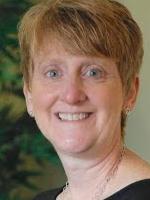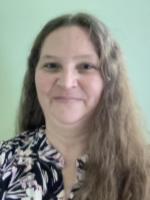


The purpose of this session is to introduce the concept of blended learning to educators who might be unfamiliar with the definition and/or method of implementation. By the end of the session, participants will be able to understand the impact of effective blended learning on student learning and growth; select the most appropriate blended learning model to use with a group of learners; design a blended learning experience that is accessible to all learners in the target group; and use effective engagement, enhancement, and extension strategies in a blended learning experience.
Educators today are challenged more than ever to design meaningful learning experiences that are personalized and engaging for all learners. Blended learning is a construct that helps educators address this challenge. This session will cover the specific blended learning models of Rotation, Flex, Blend/Hybrid, and Lab (fully remote) and situations where each would be most appropriate. The Rotation Model includes concepts such as station rotation, whole group rotation, in-class flip, and individual rotation. The Flex Model includes a more personalized learning pathway typically facilitated by a personalized learning playlist. The Blend/Hybrid model includes students learning in-person and remotely within the same classroom. Finally, the Lab model is a fully remote learning model where students’ learning is primarily online. The session will be facilitated in a station rotation format with other blended learning strategies embedded in each station. For example, one station will utilize a personalized playlist, while another station will utilize an in-class flip. Attendees will move through the stations learning about and discussing a variety of blended learning topics/strategies while at the same time, having an opportunity to reflect on and plan for their own implementation of blended learning. Evidence of learning will be found on shared Google Docs, Padlets, collaborative sketch notes, and shared implementation ideas.
Whole Group Overview - 20 minutes
Introductions
*Pulse Check in form of a game
*Blended Learning Overview
*Station Directions: Move through each station as directed
Station Rotation: Small groups rotate through each station - 20 minutes per station
*Station 1 - Facilitator-Led (combination of peer-to-peer interaction and device-based activity)
*Station 2 - Offline Collaboration (peer-to-peer interaction)
*Station 3 - Online personalized playlist (device-based individual activity)
*Station 4 - Extension/Enhancement (device-based individual and peer-to-peer)
Constructive Closure - 20 minutes
*Small Group Debrief
*Whole Group Share
*Session Closure
Websites
North Carolina Department of Public Instruction Rethink Education Website - https://www.dpi.nc.gov/districts-schools/districts-schools-support/office-virtual-instruction-services/rethink-education
The Christensen Institute - Blended Learning - https://www.christenseninstitute.org/blended-learning/
Blended Learning Universe - https://www.blendedlearning.org/
Catlin Tucker - https://catlintucker.com/
CAST UDL Guidelines - https://udlguidelines.cast.org/
Books
Blended: Using Disruptive Innovation to Improve Schools - Micheal B. Horn and Heather Staker
Blended Learning in Action - Catlin R. Tucker, Tiffany Wycoff, Jason T. Green
Power Up Blended Learning - Catlin R. Tucker
Balance with Blended Learning - Catlin R. Tucker
UDL and Blended Learning - Katie Novak and Catlin R. Tucker